How important is oxygen to life? Hold your breath for one minute to find out.

© Moleaer
Dissolved oxygen is one of the most critical factors limiting stocking density and production yields in aquaculture. Low oxygen levels curtail the health and survival of farmed stock, while limiting nitrifying bacteria from breaking down organic waste.
Aquaculture operators address this by aerating their farms with everything from paddlewheels to airstones, which generate the familiar bubbles we often see in aquaria.
The traditional concept of aeration is simple. By physically agitating the water surface, atmospheric oxygen is dissolved into the water’s topmost layers. Not to burst anyone’s bubble, but old-school aerators on average dissolve just 3 percent of oxygen per foot of water because the bubbles rapidly rise to the surface. Oxygen is also concentrated in the topmost layers of water, above which most cultured fish spend their days. The consequent lack of oxygen at the bottom prevents aerobic nitrifying bacteria from breaking down waste, creating layers of sludge which harbour various pathogens, while rapidly deteriorating water quality.
But what if oxygen can be directly infused into the water column? What benefits can an aeration solution which aerates any culture system evenly and efficiently bring? This month, we’ll take a closer look at nanobubbles, tiny bubbles with a big impact.

© Moleaer
What are nanobubbles?
Simply put, nanobubbles are very, very small bubbles, about 2,500 times smaller than a grain of salt. All but invisible to the naked eye, the little orbs are no longer large enough to float to the water surface.
With properties closer to colloidal particles (small solid particles suspended in a fluid phase) than bubbles, they become neutrally buoyant and can remain suspended in the water column for months, saturating chosen levels of water with oxygen.
Nanobubbles are created by diffusing compressed oxygen into fast-flowing water, which further spreads and dissolves bubbles. Nanobubble generators have an oxygen transfer efficiency of up to 85 percent, nearly 30 times the rate of traditional aerators. This is significantly higher than other advanced oxygenation systems, including oxygen cones, skimmers and venturi aerators.
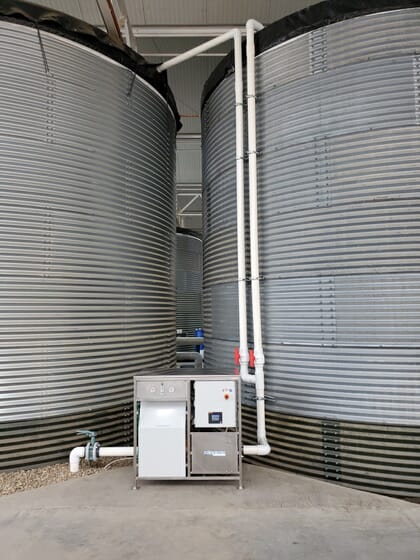
Equally important is that nanobubbles effectively act like solid particles, scouring and disinfecting surfaces - like sandpaper – to destroy algae, biofilms and pathogens. When stimulated, the bubbles release hydroxyl radicals, which further help reduce contaminants.
These characteristics have already led to nanobubble technology quickly gaining popularity in the wastewater management sector as a highly efficient water treatment tool. Nanobubble generators can offer similar advantages in aquaculture by increasing stocking densities without compromising water quality, while potentially reducing the effects of pathogens. Available systems are modular, easily installed and can be scaled up or down as needed, with varying generator discharge volumes, ranging from under 20 to over 1000 gallons per minute.
The Fish Site recently interviewed three nanobubble proponents and here’s what they have to say about the technology and its advantages for fish and shrimp farmers.
Increasing stocking densities and improving performance
Depending on parameters, traditional aeration systems usually allow the culture of up to 40 kilos of seafood per cubic metre. With nanobubble technology, this can be raised to 80 kilos or more. From 30HP to 200HP of traditional paddlewheel aerators are typically used per hectare, but more efficient nanobubble generators can better aerate water using less energy.
A 2020 Indonesian study published in Aquaculture and Fisheries compared the effects of a nanobubble generator and a traditional diffuser aerator in shrimp farms. The nanobubble setup doubled production while improving survival and feed conversion rates.
At a Recirculating Aquaculture System (RAS) salmon hatchery in Canada, a company recorded a 22 percent increase in fish biomass after using nanobubbles for a month.
“Cultured animals cannot efficiently digest feeds well in low oxygen levels. By stabilising dissolved oxygen levels, farmers can optimise the metabolism of farmed shrimp or fish. This enhances FCR, growth and overall health, and thus increases overall production,” says RAS Aquaculture’s Nik Nurasyikin. Her company is based in Singapore and provides solutions for mud crab farms and indoor shrimp farms using biofloc and nanobubble technology (be sure to check out their excellent YouTube videos).
Though also applicable to ponds and open areas, nanobubble technology is particularly suited for RAS setups aiming for high-density production. Regions and countries where space is at a premium – such as Europe, Japan or Singapore – can use the technology to efficiently produce more fish or shrimp per cubic metre.
“Densely-stocked shrimp cultures require heavy aeration, especially when the animals reach maturity and consume more oxygen. Since nanobubbles last long in the water column, they provide cultured animals with sufficient oxygen, while aerating the bottom layers to induce aerobic nitrifying bacteria to break down waste,” explains Nurasyikin. Shrimp culture requires good aeration and high water quality.
The system is also well-suited to enhance the productivity of biofloc systems, which require well-oxygenated, flowing water to prevent solids from settling. Biofloc setups must avoid dead spots, which create anaerobic zones to generate deadly ammonia and methane.
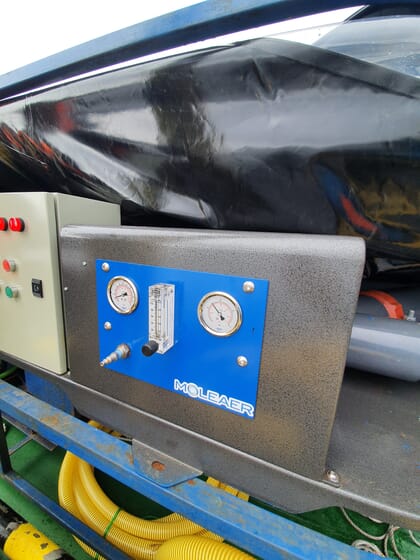
© Moleaer
“The water in biofloc systems brightened up from a dark chocolate to a milk chocolate hue after nanobubbles were introduced,” says Moleaer co-founder Warren Russell, a water quality and oxygenation solution provider based in the United States and the global leader in nanobubble technology. “Oxygen transfer can go deeper in the floc, generating healthier cell mass and flocculation.”
The big dilemma relates to the wisdom of farming fish or shrimp too densely and how this impacts animal welfare. It has been recommended, for instance, that salmon farms stock at a density of no more than 20 kilos per cubic metre, however typical RAS systems need higher densities in order to be profitable. Although nanobubble technology makes higher stocking densities possible, this should be very carefully considered in the farming of tomorrow’s seafood.
Keeping pathogens at bay
“There are two main parts to disease or pathogen control,” explains Russell. “The first is to avoid dead zones with low saturated oxygen. The second is to remove biofilm surface deposits, thereby reducing pathogens, specifically fungi and bacteria.”
In Chile, Moleaer used its technology in conjunction with a chemical product to treat 310 metric tonnes of mature salmon in a 40 by 40 metre cage. In just two hours and 20 minutes, 85 percent of adult sea lice were removed, the best result of a single treatment to date. The fish were also significantly calmer and unstressed by the treatment.
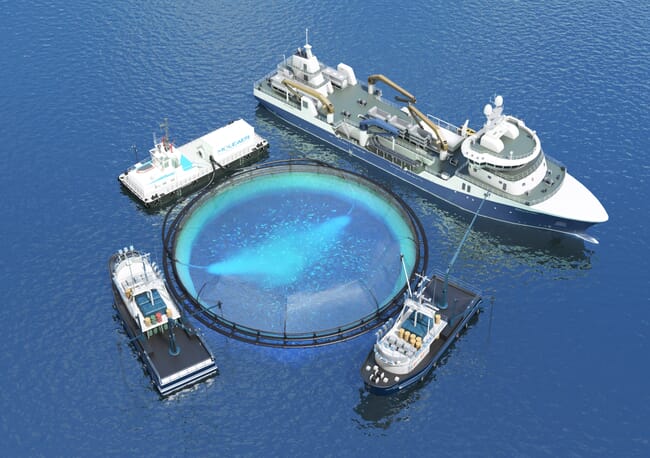
© Moleaer
“Research found that nanobubbles reduce Vibrio and other infectious bacteria in shrimp by creating oxygen free radicals which remove bacteria, leading to fewer deaths and better yields,” adds Nurasyikin. This in turn also lets farmers minimise their use of expensive antibiotics – a precursor to healthier, sustainably-produced and premium-grade products.
Bioremediation potential
In 2013, nanobubble technology was applied to blow life back to a degraded seabed in Yokohama, Japan, where the only types of marine life left were worms and some clams. Heavy sediments often host populations of anaerobic, sulphur-loving bacteria like Beggiatoa and fungi, creating local dead zones devoid of most lifeforms. A nanobubble generator was put to work eight metres below the waterline and, within six months, fish, shrimp and seaweed had returned.
In 2018, a small lake in Florida, USA, overrun by toxic blue-green algae was treated with a NABAS nanobubble generator. In less than a week, most of the algae was gone and wildlife had returned.
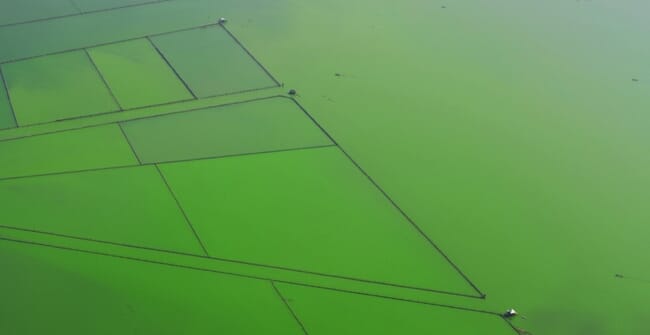
© Gregg Yan
The little bubbles’ ability to remediate degraded sites can finally help address the thick layers of sludge plaguing coastal salmon farms, while cleaning up years of accumulated waste in culture lakes and ponds. Not only does this help improve the well-being of farmed stock – it also makes nanobubble technology a champion in sustainability by tackling wastewater and sludge discharge.
Aside from being used to remediate seabeds beneath old farm sites operated by companies that didn’t take sustainability too seriously, nanobubble technology can also be incorporated into aquaculture legislation – requiring farmers not just to pay a fine when their operations result in excess sludge on the seabed, but also requiring them to immediately remediate any deterioration of the seabed with nanobubbles.
Cost of deployment
As with most new technologies, nanobubble generators require a larger initial investment than traditional aerators like paddlewheels. Whereas a 2HP paddlewheel costs under $500, an Asian made 2HP nanobubble generator costs up to $3,000, with high-end generators even more costly. The steeper initial costs should, however, be more than offset by energy and maintenance savings. The machinery is less prone to fouling and technical issues. Several companies are now offering pilot tests and rentals to prove the technology’s value.
“There might be initial cost barriers, especially in developing countries, but among the many advantages offered by nanobubbles are reduced operating expenses because of higher stocking densities due to efficient oxygen production, plus better water quality and lower energy costs,” says Russell.
Cooke Aquaculture Chile, which was oxygenating a salmon rearing tank with over 1.5 million fish with three oxygen cones draining 134 litres per minute and costing $200 a day to run, compared the results of a single 10HP nanobubble generator plus one oxygen cone, which together used just 54 litres of oxygen per minute and cost $100 a day. The monthly savings of the latter setup exceeded $3,100 and cut electricity and oxygen costs by half.
Nanobubble generators have comparatively high start-up costs, but energy and maintenance savings are seeing users making their investments back in about a year, and savings taking place thereafter. The technology does, however, require a steady supply of electricity, which isn’t always available in Asia or Africa. However, solar or diesel generators can tide systems through power outages.
“Farmers might think they cannot afford new technology because it seems expensive, especially when converted to their local currency,” adds Hector Nava of Nuagua, a Netherlands-based company that delivers water treatment and advanced aeration solutions. “What they really cannot afford is inefficiency in production. In Asia where the water is hot, aeration is a major challenge to address. Traditional or cheap aerators will simply limit production, while good technology pays for itself.”
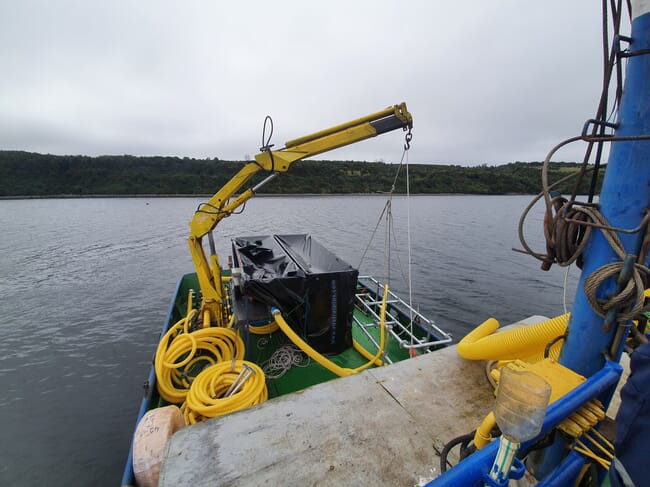
© Moleaer
“Nanobubble generators are not so complicated to maintain, provided you understand the fundamentals of using pressure to pressurise oxygen into a solution. The most complex aspect is to use a dissolved oxygen monitoring system to optimise the amount of power used by each generator, for which analogue sensors can also be used,” concludes Nurasyikin.
Repairs and spare parts, however, might be a bit more time-consuming and expensive respectively, as experts and materials usually have to be flown in from abroad.
Despite this, the future looks bright for these tiny bubbles, which hold the potential to boost global aquaculture output while lowering both production costs and the environmental impacts of sludge beds under coastal farms.
Interested farmers can contact RAS Aquaculture, Moleaer, NABAS, Nuagua, Suchart Marine Aquaculture and other nanobubble suppliers to test the waters before they go froth and let their fish multiply.




